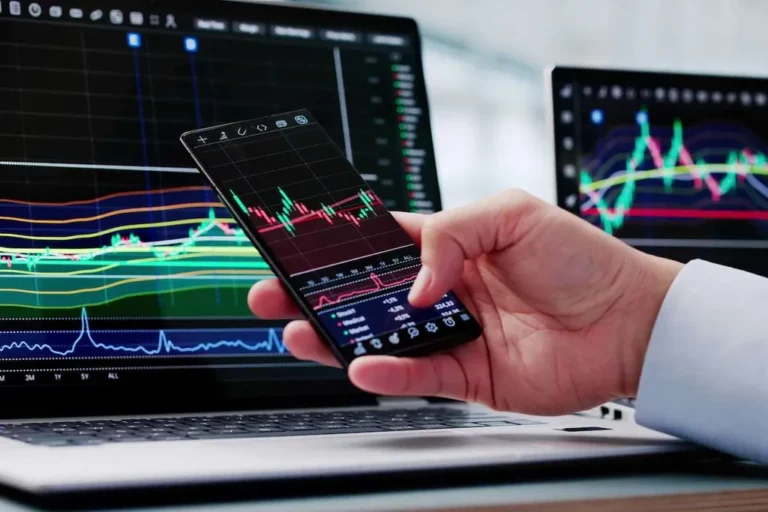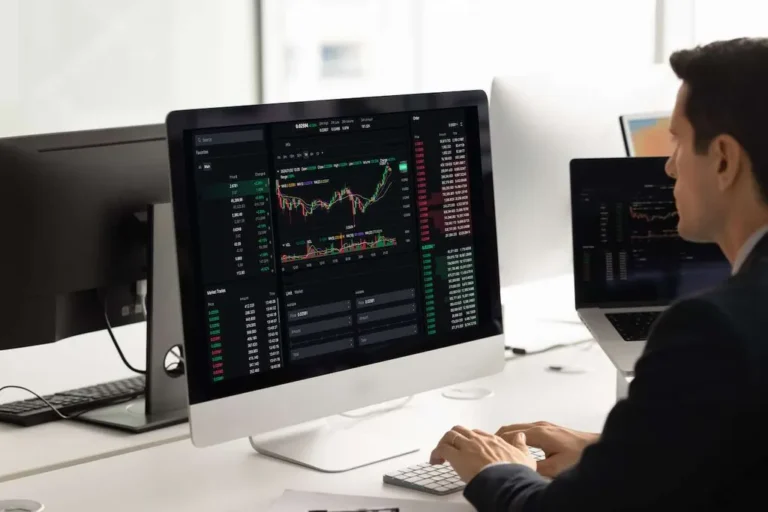Every trade involves planning and timing. At the center of it all are two key participants: market makers and takers (MMs and MTs). It’s vital to know the distinctions between market maker vs market taker because they keep the whole system running in many Forex business models.
MMs and MTs work together, even if they don’t realize it. They keep things moving as they add liquidity (which means making sure there are always buyers and sellers around), help prices find their natural level, and ensure trades happen smoothly. It’s a structure that supports healthy trading volume.
But here’s the thing: not all participants play the same part. So, what sets the market maker and taker apart? And why does it matter to understand the difference? Let’s examine the details and figure out what each role really does.
Market Makers and Takers on an Exchange
There are two critical positions: market maker vs market taker. These are the people (or algorithms) behind every buy sell trade you see.
MMs are those who constantly create offers. They place orders which aren’t executed right away, but wait for their moment. As an example: “I will buy if the price drops to X,” or “I will sell when it rises to Y.” Thanks to such orders, there is always a big choice on the market, and you can buy or sell without unnecessary waiting.
Their presence helps the market run smoothly. The more such orders, the smaller the gap between the purchase and sale price called spread. A smaller spread is always beneficial: it means fewer costs and more accuracy in transactions.
And here is an important point. Makers do not just sit and wait. They constantly update their prices to stay relevant. Thanks to it, the market remains stable even when overall activity drops. Exchanges appreciate it and often grant MMs discounts on commissions or even bonuses based on liquidity. Sometimes, as part of a payment for order flow setup.
This setup isn’t about profits; it’s what keeps the market running. Of course, they take on some risk. Holding assets while prices shift isn’t always predictable. But that small spread is what makes it worth their time and capital.
In contrast, MTs act right now. They see a price that suits them and execute the trade instantly. No waiting. They use ready offers and thereby get liquidity from the order book. They use what MMs have created.
Because of this, takers usually pay a little more. They get a ready-made opportunity without creating it. They work quickly, and you have to pay a little extra for convenience. It’s reflected in the commissions.
MMs place their orders and just wait. MTs come in, see a price that suits them, and press a button. The system updates instantly, and the next price appears right away.
Without liquidity providers, the market would lack depth and operate sluggishly. They establish the foundation. Meanwhile, MTs impact price movements and fuel overall activity.
Exchanges understand it well. They do everything to make it profitable for MMs to remain active. The more orders in the system, the better the conditions for everyone: narrow spreads, fewer delays, and a smoother experience for each user.


Turnkey Brokerage Solution For Your Business
Get the most profitable fully licensed fx/crypto brokerage software or ready-to-operate business in 48 hours. Best-in-class web & mobile trading platforms, sales-driven CRM, full integration with MT4/5, and 150+ payment providers.
Trading Fees and Liquidity
For any investor, understanding how market maker vs market taker work can help.
MMs keep things running. They place limit orders that remain on the order book until they match the incoming trades. It helps create a steady flow of options to let others trade with. Because they make costs more predictable, trading platforms often give makers favorable conditions on fees or even pay them small rewards through systems like payment for order flow.
On the flip side, MTs are all about speed. Takers use the liquidity already there, which means they usually pay more in fees. This suits traders who need to move fast, especially when markets are jumping.
Brokerage firms build their pricing around this balance. Makers help smooth out market movements, while takers bring energy and momentum. Both roles matter and both come with trade-offs. So whether you’re more strategic and patient or fast and reactive, knowing how this system works can help you pick the right brokerage and sharpen your strategy.

Key Differences Between Market Makers and Market Takers
In any financial market, there are two core players behind every trade. They each play a very different role, but together, they help keep the whole system ticking. So, let’s talk about the differences.
The idea of liquidity is vital here. It tells you how easy it is to get in or out of a position without prompting a big swing in price or running into delays.
Those who provide this flexibility are often called liquidity builders or market makers. MMs consistently place buy and sell quotes, giving others something to trade against.
MTs use liquidity. They’re the ones stepping in to negotiate the best price already present. When a really big order comes through, say, a fund buying a huge part of Ethereum during a slow trading window, it quickly clears out existing offers and moves prices up.
Makers tend to use limit orders. They pick a selling point and wait until the market comes to them. This persistent, calculated approach gives them more control and often a better chance of turning a modest revenue.
Takers prefer speed. They go straight in with market orders to get the job done immediately, even if it costs more. Especially when markets are moving fast, the urgency means paying slightly higher prices due to slippage.
Liquidity providers (MMs) play a key role as they place price quotes on both sides. There’s one to purchase and one to trade. These points don’t get matched instantly. As an alternative, MMs stand aside and give others the chance to interact with the prices. The setup lets the provider stay in control, manage risk more effectively, and decide when and how to engage.
In contrast, MTs looking to enter or exit quickly usually rely on instant-execution orders. The priority is speed. They want to complete the transaction at the best rate right now, even if it means less favorable pricing.
Liquidity providers earn as they set slightly different prices for purchasing and selling. Let’s say someone quotes to purchase an asset at $95 and to sell it at $96. If one participant offers the item at $95 and another gets it at $96, that $1 gap is income for the provider. It’s a small margin, but with enough volume, it adds up.
Now, those who take current offers off the board, usually get higher costs. MTs incur costs to access liquidity and often face wider spreads. That’s because they’re removing flexibility from the system. And most platforms reward those who keep things moving by posting quotes, not those who take them away.
The Advantages and Disadvantages of Each Role
Maker vs taker are the ones that keep the system up and going. They play different roles, and they have their own positive and negative sides. And depending on what kind of trader or business you are, knowing when to act like one or the other really sharpens your strategy.
Let’s see what MMs bring to the table:
- Cryptocurrency exchanges appreciate liquidity. So if you’re adding it, i.e., when you post limit orders, you often get rewarded. Some go as far as paying you.
- As a maker, you decide the price you’d like to purchase or trade at. You don’t settle with whatever’s available; you set your terms and wait.
- It works great in algorithmic or high-frequency trading. You can automate a big part of it and let the system run, even across multiple markets.
Still, there are some things to be careful about. Let’s take a look:
- You might wait a while for your order to get picked up. If the market moves away from your price, you could be left hanging or miss the trade altogether.
- If the market swings hard and fast, you might get caught in a bad position before your system adjusts. It leads to losses you weren’t planning for.
- Making markets isn’t a set-it-and-forget-it strategy. You must constantly monitor, tweak, and manage your positions to avoid overexposure.
Now, takers. They get a more direct and instant approach. They seize the opportunity right when it’s available. The strategy is all about speed and simplicity (which is ideal in fast-paced markets). When it comes down to market maker vs market taker, this is where takers can be the better option, as they don’t wait for orders to be filled, they act quickly. Let’s break down why many traders favor market takers.
- If you want to get in or out of a trade, just click, and it happens. That’s perfect when news breaks, prices shift quickly, or you see a setup you don’t want to miss.
- No need to deal with pending orders or tweak anything. You see the price, you decide, and the trade goes through.
- When you’re placing larger orders, liquidity offers more certainty. You know your trade gets filled.
But there are trade-offs, as an example, larger taker fees. Since you’re using liquidity instead of providing it, most platforms charge extra. And if the order book is thin, you might not get the price you hoped for. You’re taking what’s available. It means you give up some control and rely heavily on the market to cooperate.
So, what works best for you? If you’re okay with the fact that you need to set rates and be patient, the maker side might be your lane. But if you prefer speed, clarity, and instant execution, then positioning yourself as a taker makes more sense. Many experienced investors and the platforms they use switch between both roles. It depends on what you’re trying to achieve and how much risk you’re willing to take. There’s no fixed answer. Your main goal: find what fits your approach and helps you stay in control of your strategy.






